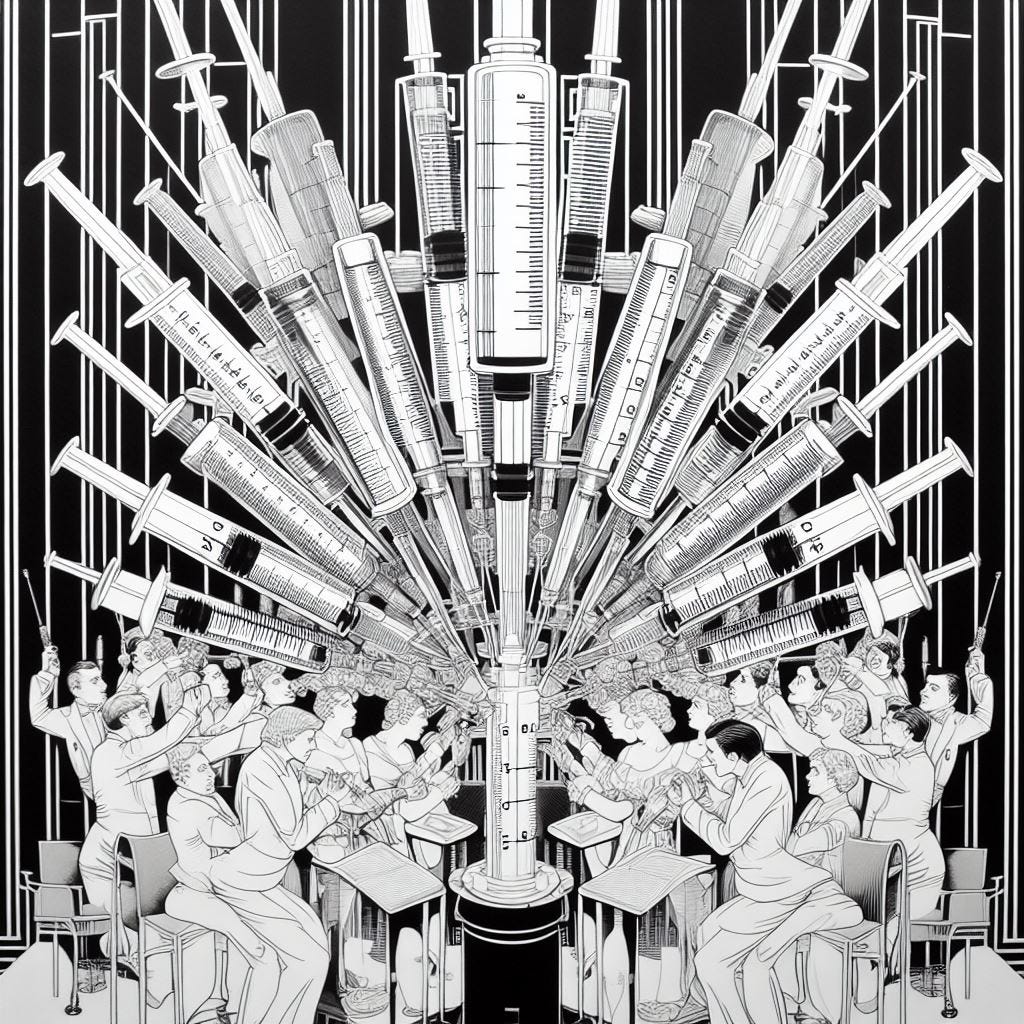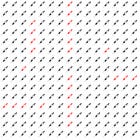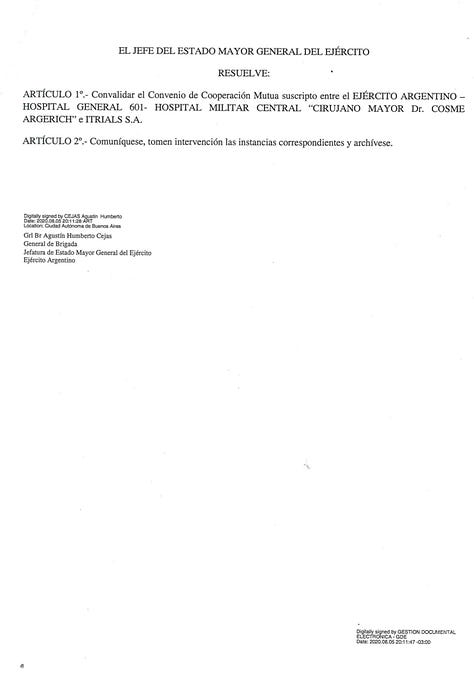Supervised Fraud
Taking a magnifying glass to the "telescope"
This is the English translation of Betrug unter Aufsicht.
This article is a summary of my findings thus far, and provides citeable sources for my Corona-Ausschuss-Interview claims.
The PHMPT FOIA production of the 16+ BNT162b2 FDA BLA license is scheduled to be completed in December 20231; in other words, the two outstanding productions contain the ~150,000 most explosive pages - a good time to review what we have. That being said, there is only so much space in an article. I have left out a lot of findings.

The BioNTech-Acuitas research of 2019
Among the available study material, study R-20-00722 is the earliest document to date. It describes the biodistribution of several luciferase modRNA-LNP constructs in BALB/c mice (albino laboratory breed). Luciferase is a bioluminescent peptide found in fireflies, among others; its expression can be visualized with contrast agents and special imaging techniques in vivo. BioNTech creates the "drug substance" or DS, i.e. modRNA expressing luciferase protein, and sends it to Acuitas for formulation into a "drug product" or DP.
According to the Certificates of Analysis3 , the BioNTech luciferase modRNA was created between 27.05.2019 and 11.06.2019. The former is the order date, the latter is mentioned in the batch designation (RNA-EH190611-01c). The Agilent quality control is dated 14.06.2019.
The Acuitas delivery receipts can also be found in the appendices4. The last table is insufficiently blacked out, and the content can be made legible using image processing software5. This shows that in addition to RNA-EH190611-01c, another, earlier modRNA batch was formulated by Acuitas, with the designation "FK190222-01c". The structural similarity in the designations allows the conclusion that the batch was created on 22.02.2019.
The first Acuitas receipt is dated 26.11.2019. This date suggests that the delivery was intended for the "ApoE knockout" mouse study6 . Then everything went very quickly, or perhaps ALC-0315 turned out to be the clear favorite, because the second Acuitas delivery with the R-20-0072 formulations is dated 11.12.2019 with production date 9.12.2019. Only 14 days between the ApoE and R-20-0072 deliveries, with the luciferase modRNA having been available since June, leads to the assumption that ALC-0315 was decided from the outset and that the "pilot formulation study" conducted by Acuitas with ALC-0218 was merely a fig leaf to maintain the appearance of ongoing development.
In this context, it is important to mention the cooperation between Pfizer and BioNTech entered into in July 2018 for the purpose of developing a flu vaccine7. BioNTech's IPO was only in September 2019, and therefore in a relatively precarious position in terms of cash flow when the licensing of the Acuitas technology must have taken place; as can be seen from the February batch described above, this licensing took place very close to the agreement with Pfizer.
The Comirnaty agreement with Pfizer dated 17.03.2020 is well known; less familiar is the agreement with Shanghai Fosun for the development and distribution of the product in South-East Asia on 16.03.20208. The close constellation suggests negotiations in the background, and the Fosun signature could well be seen as a means of putting pressure on Pfizer. In addition, Pfizer's profit margin is significantly lower than that of BioNTech. It is reasonable to assume that Pfizer smelled a rat and wanted to secure a piece of the pie with the 2018 agreement; however, BioNTech pulled a fast one and went behind Pfizer's back to develop a modRNA-LNP platform with Acuitas on its own, and Pfizer had no choice but to adapt to the circumstances in March 2020 and enter into a new agreement with BioNTech under less-than-ideal terms9.
BNT162b2 v8/v9 - Done wrong on purpose?
The following two versions of BNT162b2 were in non-clinical development:
BNT162b2 v8: modRNA encoding the proline-mutated, full SARS-CoV-2 spike protein with in-house BioNTech codon optimization.
BNT162b2 v9: modRNA encoding the proline-mutated, full SARS-CoV-2 spike protein with the "consensus-optimal" codon optimization.10
So far, there is only one BNT162b2 v8 study, namely 3816611, whose preliminary data were required for dosing in humans. According to the TGA, BNT162b2 v9 generates 3x-5x more neutralizing antibodies than v812 , and has "additional cytosine ribonucleotides"13. Only BNT162b2 v9 was used in humans.
The statements in the TGA "Nonclinical evaluation report" are based on two additional nonclinical studies that have not yet been disclosed by the FDA, R-20-0054 and R-20-0360.
The non-clinical batches each had two completion days, one for drug substance (DS), the BioNTech modRNA, and one for drug product (DP), the finished modRNA-LNP formulation. All non-clinical batches were formulated by Polymun in Austria.
Only one batch of b2 v8 was produced, on 11.03.202014. The next batch produced was the first batch b2 v9, completion date 19.03.2020.15 This alone shows that b2 v8 could never have been an actual candidate. There was not enough time to test b2 v8 and come to the conclusion that it might be better to use the optimally codon-optimized sequence v9; according to the certificate of analysis of study 38166, the LNP-formulated b2 v8 was not available until 26.03.2020, one week after the first v9 batch was produced.
This brings us to the next contradiction; according to study 38166, the test animals were already dosed on March 17 and 24, 202016. However, the certificates of analysis claim that the corresponding batches were only released by Polymun on March 26th17. The distance between Hamburg, where the study was conducted, and Polymun in Klosterneuburg, Austria, does not diminish the contradiction.
Why even use b2 v8 for the 38166 study when the actual candidate would have been available at the same time? There is another discrepancy to consider here: b2 v8 had a DS→DP time of 15 days. b2 v9 took 21 days for this(19.3.2020-9.4.2020), although it was not completed simultaneously with three other variants like v8. Was Polymun asked to delay the LNP formulation of b2 v9 for a few days to justify the use of b2 v8 in 38166? Less abstruse than an experiment that injects unfinished batches.
The specified time schedule is also impossible in study R-20-0085. How can the experiments begin 9 days18 before the batch used is ready?19 While writing this paper, I realized20, that the rhesus macaque challenge study VR-VTR-10671 also worked with batches from the future21 - and also shows immense differences to the corresponding Nature article: the PHMPT version has no BNT162b1 experimental animals, but a second dosing cohort with b2 30ug which does not appear in the Nature publication, and only three instead of nine animals in the control group. To my astonishment, the Investigator's Brochure contains rhesus monkey antibody measurements for three BNT162 vaccine candidates22. Pfizer-BioNTech tested b1+b2+b3 on monkeys, submitted the data for b1+b2 to Nature, only b2 to the regulatory authorities, and simply took in stride that the study brochure would reveal the withheld data.
The result was that the tox study on b2 v8 justified the human dosing of b2 v9. The DART study on b2 v923 did not dose until July 27, 2020, the same day that Phase 3 was initiated and ~44,000 people were administered b2 v9 30ug in a 1:1 ratio with placebo. Driving straight into a wall is also telescoping. The first administration of b2 in humans was on June 8, 2020 in study C4591001, not in the supposed "first-in-human" study BNT162-01, in which the first b2 dose was administered on June 15, 2020.
All about the Spike
The decision to use the full spike protein makes less sense the more access we get to the files. The "meeting-correspondence" file has been available since the October publication on PHMPT.24 It shows for example that Donna Boyce, Senior Vice President Global Regulatory Affairs at Pfizer, already made it clear to CBER on 26.06.2020 after a "Type C" meeting (presumably senior management) that BNT162b2 (v9, just for the sake of completeness, v8 was only non-clinical) was to be the Phase 3 candidate.25 This statement was submitted in writing on 01.07.2020 and the dose was finalized on 08.07.2020.

My previous assumption that the decision for b2 instead of b1 was based on data was wrong. Eighteen days after the first application in humans (8.6.2020-26.6.2020), the phase 3 candidate was effectively already established, and submitted in a legally binding way to the FDA one month after the first application in humans.
In comparison, BNT162b1 had a much longer observation period (start of application April 23, 2020) and two higher dosing cohorts, but only encoded a fraction of the spike protein26. b1 is 1262 nucleotides long27, b2 428328. If you leave out the higher dose groups (50 & 60 ug), b1 also had fewer side effects and comparable immunogenicity, but as is now clear, the decision in favor of b2 did not wait for the collection of this data. There is only enough time to administer one dose; the first two vaccinees were only eligible for their second dose on June 29.
In the supposed "first-in-human" study BNT162-01 under the care of the Paul-Ehrlich-Institut, the first second dose was available on July 6, 2020, so the data collected by BioNTech itself played an even smaller role. There are other striking examples of this, such as Pfizer's proposal (and FDA approval) to submit only an "abbreviated" clinical report for study BNT162-0129, or the one-year delay in the evaluation of important BNT162-01 study samples30 under the pretext of resource utilization by Pfizer studies.
The spectrum of non-clinical development work is revealing in this respect. Of the five studies that were initiated prior to human dosing, three relate exclusively to BNT162b2v9. Although 10741 was probably conducted with multiple candidates like 10671, only b2 data was submitted - which only adds weight to the "b1 was just a front" conjecture.
In the early 2020 marketing presentations31 from BioNTech, it is easy to see that saRNA, not modRNA, was actually the preferred candidate. One dose instead of two, lower amount of active ingredient required, even longer protein production - self-amplifying. Data sets on the 96 c2 subjects have been published in the EU study registry since April 2023, and the results are impressively disastrous32; with neutralizing antibodies, only the highest-dose cohort with 2x 3ug has any measurable deviation from the baseline value. However, since this cohort also had the only Covid case in the entire study, it is not even certain without detailed data insight whether this is due to the vaccine.
It becomes particularly exciting when the BNT162a1 data is included (also only available on the EU CTR so far). BNT162a1 was withdrawn after two and a half cohorts (12+12+6 subjects) due to side effects33, and has also failed miserably as far as neutralizing antibodies are concerned. a1 and c2 are both uRNAs, BioNTech term for mRNAs that are not formulated with N1-methylpseudouridine (m1Ψ) but with uracil, and c2 is also an saRNA, i.e. in addition to the sequence for the spike protein, it also contains adapted retroviral sequences that multiply themselves and the spike sequence34. b1 and b2 are modRNAs, with the “Nobel Prize” mechanism, which coincidentally Moderna also uses. b2 even uses the same antigen as Moderna's mRNA-1273, and since the formulation change from PBS to Tris even the same buffer system35. BioNTech's home-grown products proved to be disturbingly gross miscalculations, should they not have been just a fig leaf for b2 like b1. Perhaps not "Made in Germany" as so often claimed, but rather "DoD & Fauci"?
Process 2
The vaccines for the two clinical trials BNT162-01 and C4591001 were produced using the "Process 1" method - cell-free in-vitro transcription, high integrity of the mRNA, high purity, tiny production volume36.
Pfizer-BioNTech fundamentally changed the manufacturing process in the course of commercial scaling, to process 237 - huge bioreactors (i.e. drums) with at least 37L and up to ~200L38 of genetically modified Eschericcia coli bacteria to which a plasmid containing the mRNA sequence of BNT162b2 is added by heat shock. Under nutrient supply and controlled temperature conditions, the bacterial cultures multiply exponentially and with them the plasmids they contain. The modRNA contained in the bacteria is then extracted by lysis, processed and transported to other sites for LNP formulation.
So much for the theory. In practice, it turns out that the preparation of the plasmid modRNA was not particularly effective and the commercial product therefore exceeds the EMA guideline for dsDNA contamination by a factor of 18-7039 in many different batches40 and that Pfizer/BioNTech withheld from the regulatory authorities that several SV-40 elements are used in the plasmid41. This is recognizable in the given sequence, but Pfizer has intentionally modified the graphical representation. The spike sequence had to be manually annotated because no program knows it, while the industry-wide automatically labeled SV-40 sequences were manually removed from the plasmid map. This “lie by omission” has been verified by the EMA42 and Health Canada43.
As early as June 10,44 Pfizer claimed to be producing vaccine "at risk", which is relatively conspicuous in view of the "Type C" meeting taking place only 16 days later45. As the list of DS batches produced46 has a gap between 29.5 and 20.6, this could be a defective and discarded batch. Process 2 does not appear in the C4591001 study protocol until months later, in Amendment 7 dated 6.10.202047. In order to prove comparability between the manufacturing processes, a sub-study was to be conducted in which 250 subjects each receive process 2 BNT162b2 or placebo. Furthermore, an additional clinical study was to be conducted after EUA market approval. Josh Guetzkow (substack Research Rebel) has written crucially important twitter threads on this topic48. For all details on the impurities
(Kevin McKernan’s Substack) is the most reliable and up-to-date source.In short, the clinical comparability with 250 process 2/placebo patients each was dosed but never fully evaluated by the sponsors. As a FOIA request to MHRA posed by N Hunt and presented by Josh Guetzkow has revealed49, Protocol Amendment 20 in September 2022, twenty-three months later, removed the obligation to evaluate this data, with the fantastic justification that Process 2 had now been used billions of times. The C4591001 clinical trial protocol is only available up to Amendment 18 so far50. The EU CTR entry51, with the astounding 81 deaths52 for the placebo-controlled period compared to the 38 deaths by the time of BLA data cutoff 13 March 2021, contains the same reasoning as the MHRA statement; the clinical comparison between process 1 and 2 is not warranted, because of the volume of process 2 injected by that time, disregarding graciously that the only actual clinical data generated thus far was with process 1. Any of the big regulators could have forced Pfizer/BioNTech to comply; instead, they just said “ok that’s just how it is”. Pfizer/BioNTech even neutered the post-market clinical comparability study they suggested53 in June; in the second amendment to the “lot comparability” study C4591017 protocol dated February 2021, the “control arm” using a fifth manufacturing batch was removed from the study in favor of a 20 ug dosing group of one of the other four vaccine lots54. If the “control lot” wasn’t process 1, what could it have possibly been otherwise? However, until we have confirmation in form of C4591017 documents naming the batches used, this point remains formally speculative. The documents published in October allow a more accurate reconstruction of the process 2 comparability negotiations, which I will discuss once worked out in detail rather than skimmed over.55
A relatively recent discovery on process 2 in the pivotal trial repeatedly demonstrates a psychopathic disdain for ethical research behavior56 . All "process 2" subjects are identifiable by their randomization number, which exposes the blinding of the entire study as a lie. It works as follows: all "process 2" vaccination batches were sent to four different study sites. At these study sites, exactly 252 subjects were vaccinated after arrival of these batches, and these subjects are the only ones at their sites who have randomization numbers between 400000 and 499999.
Critical data integrity
It is not just the case of Augusto Roux, which should have had direct criminal consequences upon becoming public knowledge. 575859
There were many study sites where symptomatic vaccinated trial subjects were tested statistically significantly less often; site 1056, for example, submitted exactly 0 tests from vaccinees.60
According to a letter from the FDA, it was already concluded on November 25, 2020 that the data is "not clean" and the results may not be accurate,61 despite an AI company having “cleaned” the data within 22 hours of reaching the Covid cases necessary for the primary efficiency calculation62. The same AI analytics company started working with Pfizer in February 2020 when Pfizer licensed their clinical trial program LSAC63.
There are indications of manipulated phase 1 antibody data that conceal a rapid drop in titers.64
It has now been proven that Pfizer knew about certain deaths much earlier and deliberately delayed their inclusion in the clinical data, so that they did not become part of the November submission65.
Verily, formerly known as "Google Life Sciences", was responsible for recruiting the study participants66, and ICON, the contract research organization commissioned by Pfizer to conduct the C4591001 study, had already signed an OTA contract with the US DoD in April 2020.67 Pfizer signed two of these "prototype demonstration" contracts by the end of 20206869. Augusto Roux has obtained documentation that the Argentine arm of the study was run under military law70 and even interrupted due to serious errors, but the investigations were closed and archived.71
The first ten so-called SMSRs, the "summary monthly safety reports", for the period from December 2020 to September 2021 have also recently become available72. There is also a DSUR (development safety update report)73, three PSURs(periodic safety update report)74 and apparently there is also a "bi-monthly" report, of which no copy is yet available. In a nutshell: Pfizer was completely inundated, hired more than 2000 additional staff in the first six months, yet never managed to process the claims received in a timely manner in any month shown. By September 2021, there were 473,000 claimants, 1.7 million adverse events and 8383 deaths listed in the safety database and a backlog of over 70,000 cases75. The individual reports are up to 13,000 pages long and paint a harrowing picture of the interaction between regulatory agencies and manufacturer; gross errors and cheap obfuscations with hard-nosed regularity, comments, inquiries and instructions from the agencies that are dismayingly at odds with public communication, safety signals that are deconstructed one by one and concluded to be inaccurate. Had the FDA not insisted, the same would have happened with myocarditis/pericarditis76.
Moderna genotoxicity studies
An overview of the non-clinical studies for Moderna has been available since December 202277. The complete study documents available to date describe, among other things, animal experiments from 2017. At that time, however, it was still clear that it was a GTMP vaccine, and accordingly a total of six genotoxicity studies were included78, four in vitro and two in vivo. In vitro the lipids SM-102 and PEG2000 were examined, in vivo a modRNA-LNP and a luciferase-modRNA-LNP construct were evaluated. The individual studies are not yet available, only sparse references to summarized results. The experiments in Petri dishes were negative, but those in living animals were... positive79. However, as the systemic distribution in humans is limited due to i.m. administration, Moderna considers this risk to be low80. As do regulatory authorities, evidenced by the continued market availability of the products.
“The October 2023 batch is supposed to be the second to last batch that is expected to be released for the age 16+ age group, which means there is the possibility that some of the most relevant data will be buried in these final documents.”
EMA leak Dokument: Annex 1 - Draft 3.2.P.2.2 Drug Product Seite 11, “In order to investigate whether the same mechanism is involved for intramuscular (IM) administration, Luc RNA-containing LNPs comprising ALC-0315 were injected intravenously (0.3 mg/kg) and intramuscularly (0.2 mg/kg) into Apolipoprotein E (ApoE) knockout (KO) mice in the presence (KO+) or absence (KO-) of recombinant human ApoE3.”
EMA Leak Dokument: Rapporteur's Rolling Review Report Quality - COVID-19 mRNA Vaccine BioNTec Seite 56/215
https://www.tga.gov.au/sites/default/files/foi-2389-06.pdf Seite 24 “BNT162b2 (V8) induced lower titre of functional neutralising antibodies (~ 3-5 fold) compared to BNT162b2 (V9).”
https://www.tga.gov.au/sites/default/files/foi-2389-06.pdf Seite 19 “V8 and V9 have identical amino acid sequences of the encoded antigens and differ only in their codon optimisation sequences, which were designed to improve antigen expression (V9) with higher content of cytosine ribonucleotides.”
Siehe Tabelle in Fußnote 10
Siehe Tabelle in Fußnote 10
Start of experiment 07.04.2020 in Texas, batch 09.04.2020 produced in Austria at Polymun. This can be explained by the fact that b1 dosing began on 7.4., yet the data was removed from the report submitted to PHMPT
Investigator’s Brochure Seite 31
https://phmpt.org/wp-content/uploads/2023/10/125742_S1_M1_meeting-correspondence.pdf Seite 106 “After June 26, 2020 Type C meeting, CBER received clarification information from Pfizer’s Donna Boyce regarding the construct and doses Pfizer is planning to use in Phase 3 (The same information was later submitted to IND 19736, in amendment 24 dated July 1, 2020).”
Biologika-Zulassungsabteilung der FDA “Center for Biologics Evaluation and Research”
meeting-correspondence Seite 497
https://phmpt.org/wp-content/uploads/2023/01/125742_S7_M1_response-08jun2021.pdf “These data were not available at the time of immunogenicity cut-off for this report because the samples were put on hold due to necessary testing prioritizations at the Pfizer labs (eg C4591001 6-month stability and booster; C4591007). Pfizer has now resumed testing of these samples and an updated BNT162-01 study report will be provided once it is available.”
BNT162-01 Studienprotokoll Seite 207, Summary of safety BNT162a1 “Currently, no further dosing with this vaccine candidate is planned”
https://www.tga.gov.au/sites/default/files/foi-2183-09.pdf Seite 13, “The saRNA has two ORFs. The first ORF encodes an alphavirus-derived RNAdependent RNA polymerase (replicase), which upon translation mediates self-amplification of the RNA. The second ORF encodes the vaccine antigen.”
Seite 24, “It is interesting to note that, eliminating the electrolyte buffer and substituting the new organic buffer based on trometamol, the entire formulation of the new PfizerBioNTech preparation called Tris Sucrose becomes, if not identical, at least very similar to that of Moderna's Spikevax vaccine.”
EMA leak Seite 57, Dokument: Rapporteur's Rolling Review Report Quality - COVID-19 mRNA Vaccine BioNTec
One batch in Marburg provides up to 8 million doses (https://investors.biontech.de/news-releases/news-release-details/biontech-provides-update-vaccine-production-status-marburg) we know that 37,5L give 1,545,000 doses, so the Marburg batch must be at least 194L.
Seite 12, “Ratio of RNA:DNA ranges from 43:1 To 161:1. EMA allowable limit is 3030:1. This is 18-70 fold over the EMA limit.”
Seite 14, “The Sponsor is currently manufacturing vaccine at-risk and is targeting to have US-manufactured and released vaccine doses of approximately (b)(4) available by year-end 2020 with initial deliveries projected for late November.”
See table in Footnote 10
Seite 1285, “The initial BNT162b2 was manufactured using “Process 1”; however, “Process 2” was developed to support an increased scale of manufacture. In the study, each lot of “Process 2,” manufactured BNT162b2 will be administered to approximately 250 participants 16 to 55 years of age. The safety and immunogenicity of prophylactic BNT162b2 in individuals 16 to 55 years of age vaccinated with “Process 1” and each lot of “Process 2” study intervention will be described.”
C4591001 EU CTR webpage, “15 Sep 2022: Added language pertaining to early completion of this clinical trial as agreed with FDA and EMA. Removed the objective to describe the safety and immunogenicity of prophylactic BNT162b2 in individuals 16 to 55 years of age vaccinated with study intervention produced by manufacturing “Process 1” or “Process 2” because of the volume of BNT162b2 now distributed and administered globally using manufacturing “Process 2,” making this comparison unwarranted.”
60/21 (blinded placebo-controlled follow-up Phase 2/3)
38 Open Label Crossover Follow-up Period (placebo/BNT162b2)
46 Protocol amendment 18 (boosters)
=165 “Number of deaths (all causes)”
“To fulfill CBER’s clinical lot consistency study requirement, a randomized safety and immunogenicity study will compare three lots of the vaccine candidate manufactured with a process suitable for large-scale manufacture and will be performed in 2021.” Page 40/636 meeting-correspondence
Twitter thread showing a systematic approach to the filehttps://twitter.com/a_nineties/status/1724788800768110819
Die vielen Ungereimtheiten bei der Pfizer-Zulassungsstudie WELT.de 17.2.2023 Archivlink https://archive.is/m3snI
“The datasets are not clean so results may not be entirely accurate.”
https://icandecide.org/wp-content/uploads/2023/09/28_BLA-125742-0_07-20-2021_Memo_Review-1.pdf
“But thanks to process and technology optimizations, including a new machine learning tool known as Smart Data Query (SDQ), the COVID-19 vaccine clinical trial data was ready to be reviewed a mere 22 hours after meeting the primary efficacy case counts.” https://www.pfizer.com/news/articles/how_a_novel_incubation_sandbox_helped_speed_up_data_analysis_in_pfizer_s_covid_19_vaccine_trial
“Saama Technologies, Inc., the number one AI clinical analytics platform company, announced today that it signed an agreement with Pfizer Inc. to develop and deploy an AI-powered analytics solution to reduce the challenges commonly experienced by clinical study data managers and monitors.” https://www.businesswire.com/news/home/20200218005688/en/Saama-and-Pfizer-to-Transform-Work-of-Clinical-Data-Managers-and-Monitors-With-AI
https://twitter.com/a_nineties/status/1715785724580995317
Note: the July 2021 SMSR is only available by downloading the entire October production, the direct link on PHMPT does not seem to work
SMSR+placebo Exceldatei, Tab SMSR
Seite 3, SMSR April 2021, “Myocarditis and Pericarditis were evaluated and determined not to be risks”
Seite 7438, SMSR Mai 2021, “Closing of the signal myocarditis and pericarditis is not accepted.”
























BNT162b1 caused high grade Fever in the clinical trial in China, which explains why that country decided not to proceed with mass jabbing.
https://geoffpain.substack.com/p/pfizer-biontech-covid19-jab-multiple
Excellent information. Print and keep copies in a safe place.